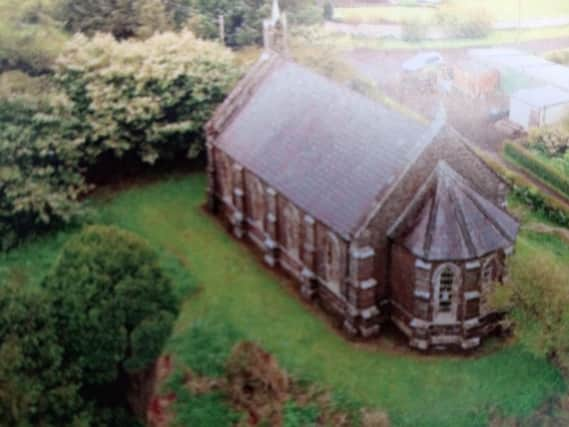'˜The wee church in the hills' at Fermoyle goes on the market


Fermoyle Church of Ireland has been put up for sale, having been closed for some time.
The district of Fermoyle lies in the south of Dunboe, which was since the thirteenth century a large and important parish in the Diocese of Derry, permanently linked to the Archdeaconry of Derry.
Advertisement
Hide AdAdvertisement
Hide AdRev Diane Matchett explained the history of the church whose sale is being handled by Benson’s who describe the ‘quaint church building formally known as the Church of the Ascension’ as being situated in an ‘idyllic countryside location’.


When the Clothworkers’ Company of London were given this land in the Plantation, they found a parish consisting of 60 townlands, stretching from Downhill to the Bann and from Kilcranny to Formoyle (as it was spelt then). They adopted and improved the existing Parish church, St Adamnan’s in Downhill and later, when it was destroyed in 1689, gave the land in Articlave on which St Paul’s church was built in 1691 to replace it.
By 1840 a growing number of parishioners were living in Fermoyle and finding it difficult to
travel to St Paul’s, so the Company were approached by the then Rector, Archdeacon Thomas Bewley Monsell, to provide a new district church in Fermoyle which was established as a permanent curacy, comprising nine townlands taken from the Parish of Dunboe.
Advertisement
Hide AdAdvertisement
Hide AdHe persuaded the Company to give a site for the church and they also agreed to provide an annual grant towards the upkeep of the building. Fermoyle Church was completed in 1844 to designs by Herbert Williams, a pupil of Samuel Angell, the Surveyor to the Clothworkers. The church, a simple and dignified structure, built of local basalt in the Victorian Gothic style, was originally dedicated to St Matthew but has always been known as the Church of the Ascension.


It was planned to establish Fermoyle as a new village on the coach road between Coleraine and Limavady so the Clothworkers also built a dwelling for the incumbent and a school beside the church with the intention that they and the church would be at the centre of this village. The new village was slow to develop due to the famine of the 1840s and was finally doomed to failure with the opening in 1852 of the railway from Limavady Junction to Coleraine which led to the seaside village of Castlerock being developed instead. Fermoyle church continued with its small numbers but had lost its intended congregation to Castlerock.
When the Clothworkers sold their estates, they gave the parish a gift of £200 and in 1869 the lands of Fermoyle were purchased by the Representative Church Body of the Church of Ireland. In 1873 the church was united with the mother church in Articlave.
Eventually the school and later the church had to close. As Castlerock grew, a new district parish was created there in 1868 with a further 17 townlands taken from the parish of Dunboe. Christ Church Castlerock was opened in 1870 and was later incorporated into the United Parish of Castlerock, Dunboe and Fermoyle, the situation which continues to this day.
Advertisement
Hide AdAdvertisement
Hide AdFermoyle church remained closed for many years until it was re-opened in the 1960s by Canon W B Evans, thanks to a great deal of voluntary work by parishioners of St Paul’s and Christ Church which included the provision of heat and light by bottled gas. Several services were held each year including on Ascension Day, at harvest time and an annual Orange service which was held by Macosquin district to help pay for the upkeep of the church. Sadly, in 2006, during the incumbency of Rev Malcolm Ferry, the ceiling collapsed and the roof was rendered unsafe. The church had to be closed.
The Select Vestry spent a number of years trying to repair the roof and also seeking to find ways to make use of the building but finally had to take the decision to close the church and put it up for sale.
On May 22 this year, the Bishop of Derry and Raphoe, Rt Rev Ken Good, held a service of
deconsecration at the church which brought to an end, after 160 years, the life of the ‘wee
church in the hills’.